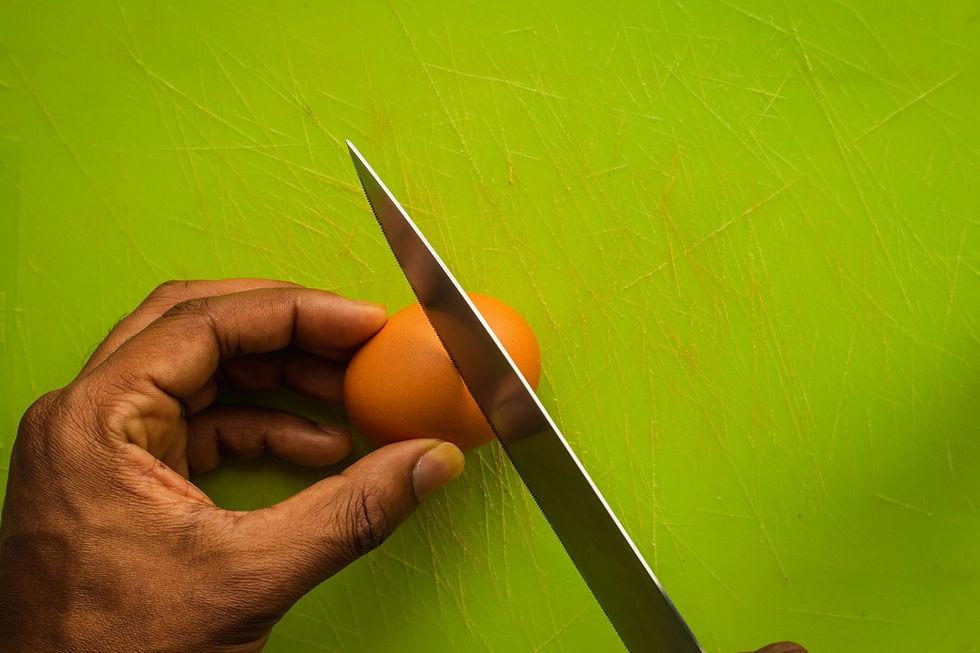Influencer Marketing: What it is and How to Make it Work for Your Brand
- Kara Maddox
- Feb 13, 2019
- 7 min read

Influencer marketing is taking over the advertising industry right now. Sometimes it can be impossible to open Instagram without seeing product promotion from the influencers you follow. Why is that the case? Who is using influencer marketing? What really is it?
What is an influencer?
Influencers are people with prominent social media followings that use their position to share their opinions on products, lifestyles, etc.
Who are influencers?
They can be celebrities, athletes, business-owners, experts, authors, etc. They are usually an “expert” on one subject.
What do they post about? They post about their area of expertise. This can include sports, makeup, raising children, hair, exercise, healthy food, low-end fashion, high-end fashion, and basically everything else under the sun. They can be on social media platforms such as Twitter, Facebook, Youtube, Instagram, LinkedIn, or they may run a really successful blog. Lots of bloggers these days use social media to get a larger following, so the lines can be blurred.
The content influencers post and the way they present themselves is known as their brand identity. They carefully curate their presence by developing a voice, visually consistent images and area of expertise. This allows their followers to immediately recognize one of their posts and know what to expect from them. If you want to learn more about branding, click here.
What is influencer marketing and why do companies use it?
To understand what influencer marketing is, we have to explore how it began. It all started with celebrities being spokespeople for their favorite products. Before social media, celebrities would be interviewed on red carpets and for magazines and would talk about the products and brands they used.
Then, it moved to social media. The Kardashians promoted Sugar Bear Hair vitamins and weight loss tea on Instagram. Oprah was vocal about her weight loss using Weight Watchers. Smaller celebrities started participating too. Promoting products trickled through the ranks until it reached "normal people."
Influencer marketing is used because it is an easier and sometimes cheaper way to reach key demographics. It can be very targeted and niche.
There are influencers for EVERY product, situation and demographic. It is a lot harder to advertise online with the prevalence of ad blocking software, so influencer marketing is a way around that.
It also seems more authentic than typical ads you see on tv or in magazines. If the product recommendation is coming from a “real person” then people trust it more. You can see #sponsoredpost or #ad if they pay for the post. The posts usually include testimonials about a product and discount codes associated with the influencer.
Types of Influencers
Check out this infographic by Mavrck that sums up the types of influencers and their followings.
Celebrities
Whether they are reality tv stars, actors/actresses, professional athletes, etc. they are very prominent figures in pop culture and are seen as the “biggest” influencers. They're extremely visible to the public eye and have a lot of sway.
Ever since you were a child, you probably had celebrities that you’ve looked up to. If they said they found the end-all, be-all best product for something, you’d probably jump on the bandwagon, right?
Because of their massive influence on modern society, brands pay loads of money for their endorsements.
Kylie Jenner is listed by hopper as the highest paid influencer. She is paid around $1 million per sponsored instagram post.
Selena Gomez takes spot number two, making around $800,000 per post. She is trailed by Cristiano Ronaldo ($750,000), Kim Kardashian ($720,000) and Beyonce ($700,000), according to hopper.
Celebrities are thought of as the first true influencers. They had these loyal followings in real life and when social media platforms were created, they took that following to the online space.
Macro-Influencers
Mavrck defines macro-influencers as influencers that have followings that range from 10,000 up to 1 million.
Famous doctors, scientists, and politicians:
Doctor Oz is famous for his tv show, but he has a huge social media presence as well.
Journalists
Journalists serve a watchdog function for society. They’re not traditional influencers that work with brands to promote products, but they do influence the public. They keep an eye on political and social happenings and then report it to the public. Their agenda becomes the issues that the public takes note of and cares about. They influence what pops up on our twitter feed or is read to us on NPR. They also shape issues that come to the forefront during election time.
Political commentators
There are many outspoken political commentators on Twitter. Some argue about the news of the day and attack their opponents under the guise of the internet. Others are more peaceful, but in today’s political climate, that is hard to find. Politicians themselves tend to have large followings on Twitter and use that to further their party’s message.
Alexandra Ocasio Cortez is a newly-elected member of Congress who has made waves on Twitter.
Bloggers and content creators
Being a blogger and a content creator is a full-time job. Once bloggers and content creators amass enough of a following, they usually quit their jobs and focus on their online work. Some spend days testing recipes and then wake up at the crack of dawn to get the right light for their photographs.
Others seek out remote locations with visually appealing backgrounds to take photos showing off their outfits. Hours and hours are spent online engaging their fan base to keep them loyal and involved.
Working from home and pursuing your passion seems like the dream job, but there can be some drawbacks. Bloggers and content creators often put in many hours a week to keep their platform successful. If you’re interested in the pros and cons of working from home, read more here.
Micro-Influencers
Micro influencers tend to range from 500 to 10,000 followers, so they are the closest to “real people” as influencers get. They most likely already promote products on their pages that they’re not getting paid to promote. Most micro-influencers started small and worked their way up. Their following isn’t due to fame or notoriety. This dedication to growing a group of loyal followers speaks to how well their followers trust them. Since trust is something that traditional advertising has lost over the years, gaining it back through influencer marketing is crucial.
Building a relationship with this level of influencer will only help your brand. Making connections can lead to future promotion. Even if they don’t promote your product or you don’t end up partnering with them, leaving positive impressions on as many people as possible can never hurt.
My Experience with Influencer Marketing
The first time I remember knowing what an influencer was or recognizing that someone was an influencer was on YouTube. I enjoyed watching makeup tutorials and seeing all of the products that the artists used. After watching them on YouTube, I started following several of them on Instagram and Snapchat as well. Instagram is where they do most of their paid partnerships and they also show off all of the free goodies they get in PR kits from brands. This is where most of my “influencer-related” purchases come from.
Another type of influencer I follow is influencers that post about organic food and products. They usually tend to be vegetarian as well. I started following these accounts to ease my transition to living a more environmentally-friendly lifestyle. I’ve found brands of reusable produce bags, organic nut butters and great vegetarian substitutes for meat.
Travel bloggers have become more prominent in my feed as well. I started following them to get inspiration for my four and a half months in Europe last year. I’ve followed even more now that I’m home, so I can see pictures of some of my favorite places. I follow several accounts that are based on exploring Brussels, which is where I lived. I followed all of these accounts once I returned to the United States because I was nostalgic.
Lastly, I follow fashion bloggers. I follow some who are high-end and some who find the best deals Amazon can give you. This category of bloggers doesn’t tend to influence my purchase decisions all that much. I would categorize their influence on me as inspiration. I don’t run out and buy the exact same pair of jeans or cardigan, but if I see something similar when I’m shopping, I may purchase it.
How to make influencer marketing work for your brand
Taking a look at your target audience will help you determine the answer to the following questions.
What type of influencer is best for you?
Do you serve a niche market? Is it a product that many people use in their daily lives? How big is your budget?
If you have a small budget and are targeting a niche market, a micro-influencer is probably your best bet.
Should you use an influencer?
Does your demographic follow and interact with influencers on social media? Does this particular influencer appeal to your demographic?
Make sure influencers are relevant to your target audience. It isn't helpful if your target audience doesn't see the post!
How to find the right influencer for you & work with them
First, look through your followers and identify those that fit into the micro-influencer category. Then, search Instagram via relevant hashtags and research bloggers who are prominent in your sector. If you’re having issues finding people, resources like Influence.co are really helpful.
When you contact influencers, your first goal should be to develop personal relationships. Don’t necessarily approach this as you would approach other business transactions. These are real people who are striving to be authentic for their following while being authorities in their subject matter.
Once you have contacted them or interacted with their page, send PR packages and/or information about your company. Offer free trials and encourage them to review your product or service.
Instead of paying them to post, which requires a disclosure that it is paid advertising, giving them product samples and free trials and letting them post about their experience is much more authentic.
Influencers can be a handy tool in the age of ad-blocking software and less-trusting consumers. Traditional marketing techniques simply aren’t enough when the online marketplace is consumer-controlled and bustling with competition. Influencers for any product or service can be found and be an integral part of your brand’s marketing experience.
At KJMdigital, we want to help by connecting artists to businesses through our online landscape. And the KJM Team works because our mission and values align with what we value - radical transparency, autonomy and flexibility.
We connect your business to your local art communities through our cohesive digital branding strategies. Our Community Art Campaigns, Ambassador Programs and Thought Leadership Teams help you reach your business needs today.
Interested in learning more? Get our weekly post sent straight to your inbox by reaching out! We are always here to help!





Year 11 Religious Education at UNICCM challenges students to think about the role of religion in addressing contemporary moral issues like consumerism, wealth inequality, and environmental degradation. By examining how faith traditions promote responsible living, students develop a deeper understanding of the ethical responsibilities of individuals and societies.
Individuals searching for high-quality online training programmes often explore UNICCM. The courses are crafted to meet diverse professional objectives. Learners appreciate the user-friendly digital environment. This helps create an effective and engaging educational journey.